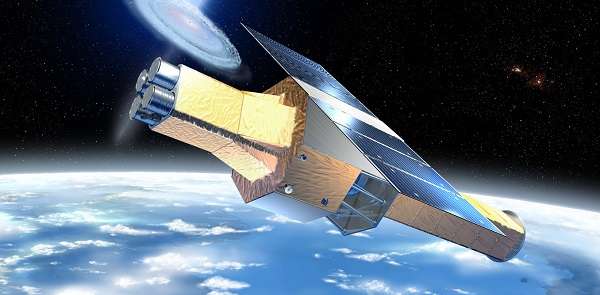Students track, observe damaged Hitomi X-ray satellite and its debris with optical telescope

Engineering Physics students at Embry-Riddle Aeronautical University's Daytona Beach Campus have made several high cadence telescope observations of the recently damaged Hitomi X-ray satellite and several of its debris pieces.
Hitomi, also known as ASTRO-H, was a Japanese X-ray astronomy satellite that was launched in February. The $275 million spacecraft was 46 feet long when deployed and weighed 6,000 lbs. It carried a number of scientific instruments, including a unique device called an X-ray microcalorimeter that was intended to investigate the evolution and large-scale structure of the universe, dark matter distribution, how matter behaves in high-gravity areas like black holes, and other high-energy phenomena.
It experienced a catastrophic event on March 26 during its first test observations 360 miles above the Earth. The U.S. Joint Space Operations Center detected several fragments of debris in the area and Hitomi's orbit suddenly changed.
"As soon as we got news of the suspected breakup, we wanted to observe the fragments with OSCOM, an optical tracking and spectral characterization systemcapable of observing large and small space objects, to see for ourselves how chaotically they were tumbling," said Forrest Gasdia, an Embry-Riddle graduate student in Engineering Physics. "As soon as the skies were clear, Sergei Bilardi [Engineering Physics undergraduate] and I deployed a telescope for the observations."
"The Physical Sciences Department has an impressive array of telescope assets, including a 1-meter (40-inch) Ritchey-Chrétien reflecting telescope, and OSCOM, which was seed funded by a National Science Foundation grant," said Dr. Aroh Barjatya, associate professor and program coordinator of the Engineering Physics program at the Daytona Beach Campus. "All of these assets are readily available for our students majoring in Engineering Physics, which has a strong emphasis on space systems engineering, as well as a new Astronomy and Astrophysics program."
Using OSCOM, the Engineering Physics students have obtained rapid brightness measurements of the satellite and debris fragments tumbling through space. These high-speed measurements—up to 100 samples per second for the main fragment—reveal bright reflections of solar light caused by different parts of Hitomi. The data show a strong and consistent flash pattern with a period of 2.6 seconds. Further details about the OSCOM system, more photometry results, and observation videos can be found on the
Provided by Embry-Riddle Aeronautical University





















